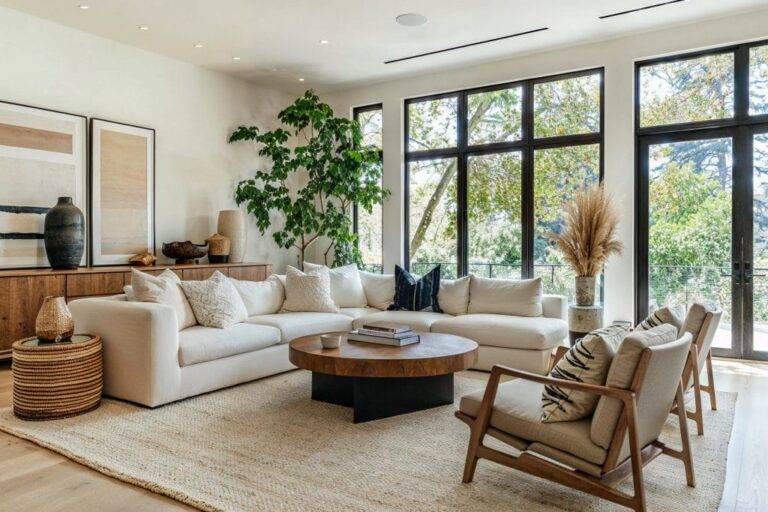Embarking on the journey of home décor is an exciting and often overwhelming experience. Whether you’ve just moved into your first apartment or are simply looking to refresh your current space, understanding the fundamentals of décor is essential to creating an environment that is not only visually appealing but also feels comfortable and personal. While interior design can seem like an art reserved for professionals, the truth is that anyone—regardless of experience—can successfully decorate their home with the right knowledge and approach. This beginner’s guide to home décor will equip you with the tools, tips, and inspiration needed to transform any space into a welcoming sanctuary.
Understanding the Basics of Home Decor
Before diving into the selection of furniture, accessories, and colours, it’s important to grasp some basic concepts of home décor. The key is to approach décor with a balance of practicality and creativity. Home décor encompasses everything from furniture and lighting to textiles, colours, and art. Its ultimate goal is to create an atmosphere that reflects your personality while being functional and comfortable for daily living.
A successful home décor scheme is not just about filling a room with attractive items. It’s about creating harmony through thoughtful choices that take into account the space, natural light, flow, and how the room will be used. Good décor makes a room feel cohesive, balanced, and livable, while also allowing you to express your style.
Step 1: Find Your Style
The first step in decorating your home is to discover your personal style. This will guide every decision you make in your décor journey, from choosing colour palettes to selecting furniture pieces. There are several well-known interior design styles, such as modern, contemporary, rustic, industrial, and traditional. You can start by exploring various styles online, through magazines, or by visiting showrooms to get a sense of what resonates with you.
While it’s important to understand the common elements of a style (for example, minimalism in modern décor or vintage furniture in shabby chic), your personal preferences should take priority. Your home should be a reflection of who you are, so consider what makes you feel comfortable and inspired. Do you prefer neutral tones with natural textures, or are you drawn to bold colours and statement pieces? By identifying your style early on, you can curate a space that feels truly yours.
Step 2: Understand the Power of Colour
One of the most powerful tools in home décor is colour. It can dramatically affect the mood and ambiance of a room, influencing how you feel and how the space is perceived. Choosing the right colours is crucial, and it starts with understanding how colours interact with each other.
For beginners, a good rule of thumb is to stick with a primary colour palette and add accent colours for contrast. Neutrals like white, beige, and grey can serve as the base of your colour scheme, offering a versatile backdrop for other tones. From there, you can introduce bolder shades, such as navy blue, mustard yellow, or forest green, to bring warmth and personality to the room. Don’t be afraid to experiment with colour combinations, but be mindful of balance. Too many competing colours can create a chaotic atmosphere, while too few can make a space feel cold or uninspiring.
If you’re unsure where to start, consider the room’s natural light. Darker colours work well in larger rooms or spaces that receive plenty of natural light, while lighter shades are ideal for smaller or darker rooms as they help reflect light and make the space feel more expansive.
Step 3: Focus on Functionality
While it’s easy to get caught up in the aesthetics of décor, it’s equally important to consider the functionality of each item in your home. The goal is to create a space that is not only beautiful but also practical for everyday living. This is especially crucial for beginners, who may be unsure of how to balance style with usability.
Start by considering the purpose of each room. A living room, for example, should provide ample seating for guests while still offering comfort for relaxation. A bedroom, on the other hand, should be designed for rest, so focus on creating a calming environment with comfortable furniture and soft textiles. Pay attention to your daily routines and how you use each space—this will guide you toward the right choices for layout and furniture selection.
When selecting furniture, aim for pieces that are both functional and stylish. Choose items that provide comfort and storage, and don’t overcrowd the room with too many pieces. The key is to strike a balance between form and function, ensuring that every item serves a purpose while contributing to the overall design of the room.
Step 4: Layer with Textiles
Textiles are an easy and affordable way to elevate your home décor. Adding layers of fabric, such as throw blankets, pillows, rugs, and curtains, can instantly make a space feel warmer and more inviting. Textiles also provide an opportunity to introduce pattern, texture, and colour into a room, adding depth and interest.
Start with the basics, like a rug to anchor the room and curtains to frame the windows. From there, layer in pillows and throws to create a cozy atmosphere. When selecting textiles, think about how different fabrics can complement one another. For instance, a plush velvet throw might look stunning against a linen sofa, while a wool rug pairs beautifully with cotton cushions. These small details can make a significant difference in the overall look and feel of a room.
Step 5: Play with Lighting
Lighting is often one of the most overlooked elements of home décor, but it plays a critical role in setting the mood and enhancing the functionality of a space. A well-lit room feels more welcoming and inviting, while poor lighting can make even the most stylish room feel cold and uninviting.
Begin by considering the different types of lighting your space requires. Ambient lighting provides overall illumination, while task lighting is designed for specific activities, such as reading or cooking. Accent lighting can be used to highlight artwork, architectural features, or other focal points in the room.
Consider a mix of light sources—table lamps, floor lamps, pendant lights, and chandeliers—to create a layered lighting scheme. Dimmer switches are also a great addition, allowing you to adjust the intensity of light based on the time of day or the mood you wish to create. Experiment with different lighting arrangements until you achieve the right balance of functionality and atmosphere.
Step 6: Add Personal Touches
Ultimately, home décor is about making a space feel like home. Once you’ve established the core elements—furniture, colours, and textiles—turn your attention to the personal touches that will make the space uniquely yours. This could include family photos, vintage finds, books, or artwork that speaks to your personality and interests.
Don’t be afraid to include sentimental items or pieces that hold meaning to you. These personal touches add warmth and authenticity to your décor, making the space feel lived in and loved. A gallery wall featuring your favourite artwork, a collection of travel souvenirs, or a cherished heirloom placed on a mantle all work to imbue a room with character.
Conclusion
Decorating your home as a beginner doesn’t have to be a daunting task. By following a few simple guidelines—such as understanding your style, choosing the right colours, focusing on functionality, and layering in textiles and lighting—you can create a space that reflects your personality and serves your needs. Don’t rush the process; take your time to explore different styles and experiment with various elements. Above all, remember that home décor is a personal journey, and the most important thing is that your space feels like a true reflection of who you are. With these foundational tips in mind, you’ll be well on your way to crafting a beautiful, comfortable home.















